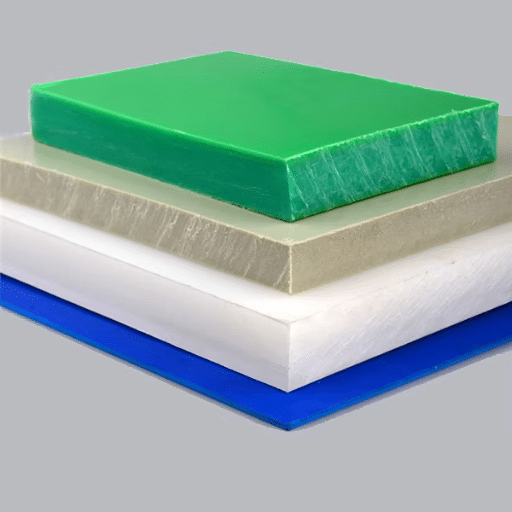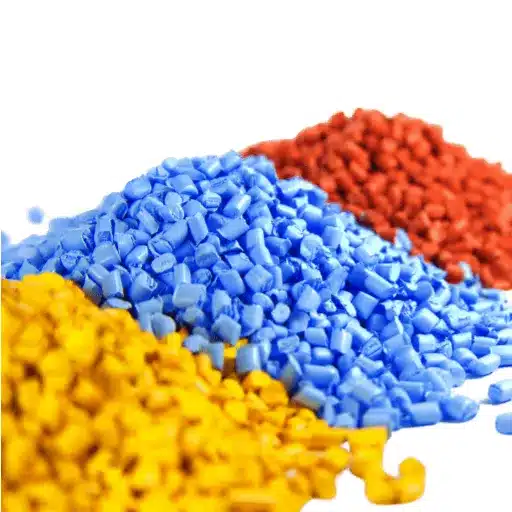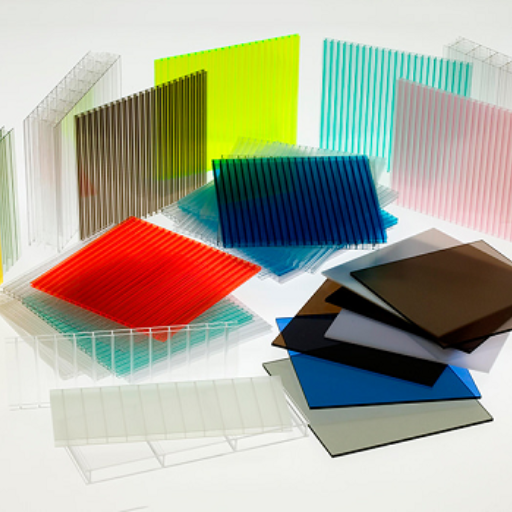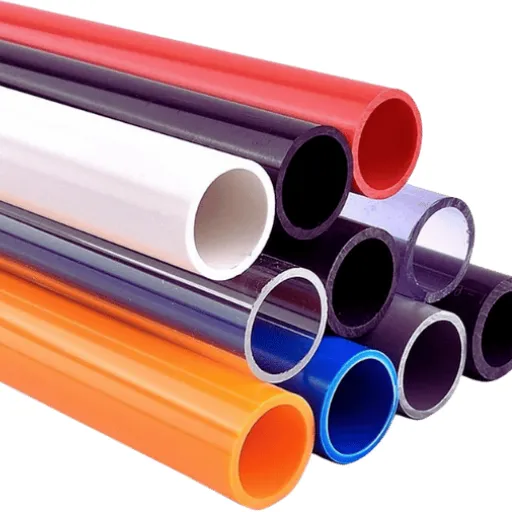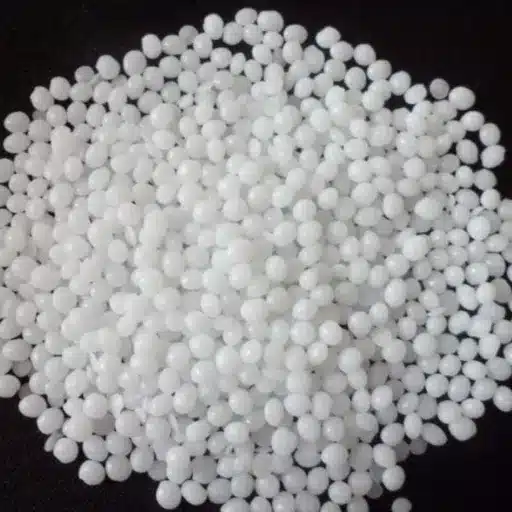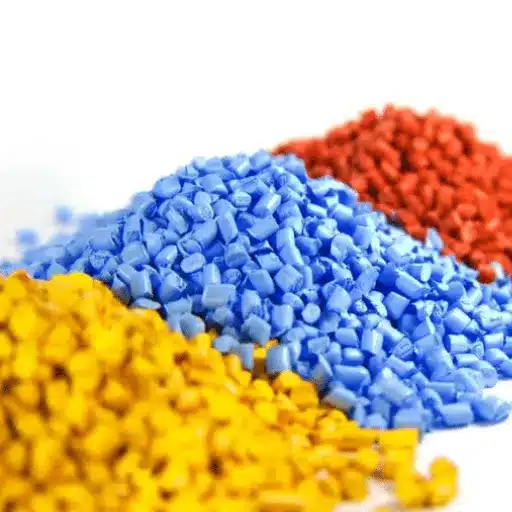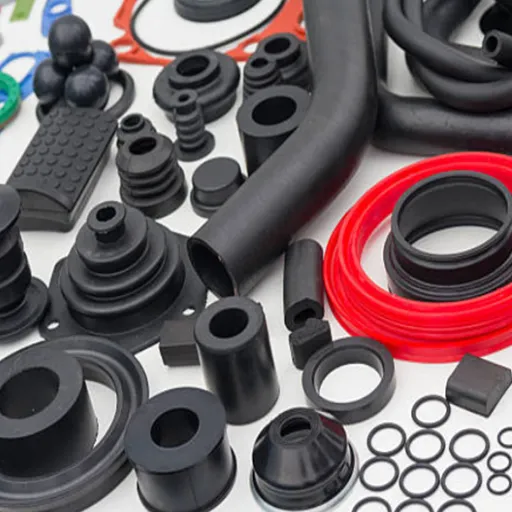HDPE, a versatile and highly reliable thermoplastic material, is widely used and has emerged as the dominant form of packaging in the industry involved in the storage of edibles. This is on account of its reasonable cost, toughness, versatility, and resistance to wear and tear, and also to ensure it is safe for food. This eagerness left us with the question of what food-grade HDPE is and how it compares to other food-grade materials available. For this reason, we will explore the constitution of HDPE, the licensing procedures that HDPE undergoes, as well as some of its industrial uses. Whether one is working on eco-friendly food storage containers or considering new materials for commercial packaging, grasping the fundamentals of HDPE plastic will be of help in making the right decision.
Introduction to HDPE and Food Safety

HDPE, that is, high-density polyethylene, is a type of vinyl that is known for its extreme resilience and the ability to resist moisture and form strong barriers that block impurities. The food-safe nature of this type of polyethylene arises from its inert behavior with food – this makes it safe to use with no risk of contamination from the polymer itself or its odor. Furthermore, HDPE is commonly approved for food uses and it even leads to the requirement of food standards by the U.S. FDA and other regulatory bodies like those under the European Union. Such standards also confirm that the substance has been proven to be of an acceptable standard for food where it will be consumed. HDPE is very applicable in the field of food because of its durable yet malleable and light texture, which fits well on things like Food storage containers, cutting boards, or even milk bottles.
What is HDPE?
HDPE, a common abbreviation for High-Density Polyethylene, is a type of plastic that is composed of molecules from petrochemical sources, with a principal ingredient being ethylene gas. It is noted for the fact that it has a high specific strength, with a specific gravity usually in the range of 0.93 to 0.97 g/cm³. The importance of the chemical structure is that it is the reason why HDPE has a high resistance against the effects of impacts, moisture, and chemicals, thus becoming a very useful product in the field of industrial and consumer products. High-Density Polyethylene has superior tensile abilities, as well as an impressive temperature resistance, and resistance to wear and tear, which is essential, especially in transient environments. These factors explain why it is one of the most common products in the piping, plastic, and other spheres which include films, bottles, containers, and geomembranes.
In addition to that, yet another merit of HDPE is the element of recycling. Optimal life has been maintained since it allows the same degraded stuff to reclaim its former purpose as raw polymers with only minimal impairment to the physical structure of the material. With the improvement in fabrication technologies, HDPE remains a preferred material in such applications, which necessitate fixed, stable, and light solutions.
Characteristics of Food-Grade Plastics
- Chemical Resistance
Plastic, which is safe for food, does not react to acidic or oily soups and sauces, which are the most common constituents of food products. Since the food safety care is also there, the possibility of the material causing contamination is avoided. Therefore, for instance, polyethylene terephthalate (PET) and high-density polyethylene (HDPE) are widely used due to their excellent resistance to chemicals.
- Non-Permeability
High-quality polymers for use within an approved article (FDA grade plastic) have minimal permeability, hence gas, moisture, or odor are not as easily channeled in or out of the packaging as the package encasement assures. Packaging is very important, especially in perishable foods, to ensure they are fresh and of good quality. PET and polypropylene (PP) are thermoplastics with very low gas odors and that is diffusive.
- FDA and EU Compliance
Food-grade plastics need to adhere to certain standards and regulations, including Food and Drug Administration (FDA) standards and European Union regulations on plastic materials and articles intended to come into contact with food. The certifications help to establish that the plastic is okay to be used with food for long period of time.
- Temperature Resistance
Certain plastics, which are of food grade, survive even when they are exposed to excessively high or rather low temperatures. For example, PP can cope with the temperatures in the range of -20°C to 120°C. Therefore, it is quite suitable for cryogenic refrigeration and reheating of prepared foods in microwave ovens.
- Durability
Suppose you have rather non-culinary items made from HDPE and PP. They are very tough, resistant to wear and done, as cracking is almost impossible. Thus ensuring their long life not only in industries but also in homes.
- Non-Toxic Composition
When it comes to food-grade plastic, the luxury is that it does not come with harmful plasticizers such as bisphenol A. Thus, disposable PET cups as well as PET bottles are least likely to contain harmful toxins in drinks.
Why Choose Food-Safe Plastics?
One of the most common applications of food safe plastics is in the food industry. Food-safe plastics are the number one choice in other sectors, such as medical, where products made out of such materials prevent harm and meet the established guidelines. These materials are constructed so as to halt any chemicals from leaching or migrating when they are subjected to conditions that are at extremes. For example, polyethylene terephthalate (PET) is used to make beverage bottles due to its low diffusive characteristics and high diffusion with most gases in nature, allowing nutrients to escape and deteriorate.
Long-term controlled applications implementing food-grade plastic also have to pass the requisite tests and meet the following advisory requirements of the FDA and the European Food Safety Agency (EFSA in terms of the plastics that they recommend. These assessments control not only the main components of the plastic pack, but also the mechanical behavior, which changes under stress and in case of elevated as well as long periods of thermal loading. Moreover, the evolution in the most recent technologies in the field of manufacturing has made it easier to recycle materials that could not be recycled in the past, including PP and HDPE, leading to more friendliness in the use of food-safe plastics. All these combinations of safety, persistence, and protection of the environment through the use of food-safe plastics have placed great value on them, cutting across most of the industries within the global context.
Chemical Properties of HDPE
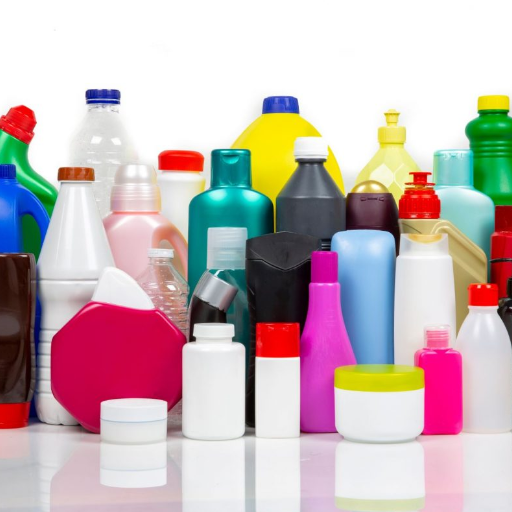
- Molecular Structure
HDPE is made up of great long linear chains of carbon atoms with few branches. The extent of its crystallinity is high, and it ranges from 70 to 90% which makes it very strong, stiff, and heavy.
- Density
The density of HDPE commonly covers the order 0.93-0.97 g/cm³. The higher density, compared to other types of polyethylene, contributes to greater strength and the ability to withstand deformation.
- Thermal Stability
- Melting Point: 120-130°C (248-266°F)
- Glass Transition Temperature (Tg): Approximately -120°C (-184°F)
Its elevated melting point and low Tg make HDPE suitable for a wide temperature range in various applications.
- Chemical Resistance
HDPE is resistant to a wide array of chemicals, including acids, bases, alcohols, and salts. It also resists most organic solvents but may be susceptible to attack by certain strong oxidizing agents.
- Hydrophobic Nature
With extremely low water absorption (typically less than 0.01%), HDPE is ideal for moisture-resistant applications.
- Electrical Insulation Properties
HDPE exhibits excellent electrical insulating properties, characterized by a high dielectric strength (around 25-30 kV/mm) and minimal electrical loss.
Recyclability and Environmental Impact
Of the seven main recyclable plastics, High-Density Polyethylene (HDPE) remains the most thoroughly and promptly recycled material in various parts of the globe because the appropriate schemes for its disposal and also reprocessing have been established and practiced. It is reprocessed thanks to its being a thermoplastic which means it can be melted and reshaped without any marked decrease in quality. In the same 360production cycle, HDPE can, in most times, be recycled again for manufacturing. This is attributed to the fact that the recycling of HDPE has, according to available data, a 50% to 60% energy conservation effect compared to the same amount of manufacturing if virgin HDPE is to be used. In addition, the process evolutionally offsets carbon dioxide emissions which as a result hits an obstacle in the frontiers against global warming.
Comparison with Other Plastics (LDPE, PET)
|
Parameter |
HDPE |
LDPE |
PET |
|---|---|---|---|
|
Density |
High (0.93–0.97 g/cm³) |
Low (0.91–0.93 g/cm³) |
Medium (1.38–1.4 g/cm³) |
|
Flexibility |
Stiff, less flexible |
Very flexible |
Moderately flexible |
|
Strength |
High tensile strength |
Lower tensile strength |
High tensile strength |
|
Temperature Resistance |
Up to 120°C |
Up to 80°C |
Up to 70°C |
|
Transparency |
Opaque |
Transparent or translucent |
Highly transparent |
|
Recycling Code |
2 |
4 |
1 |
|
Common Applications |
Bottles, pipes, construction |
Plastic bags, tubing |
Beverage bottles, food containers |
|
Environmental Impact |
Highly recyclable; low biodegradability |
Low recyclability; poor degradability |
Highly recyclable; high demand |
|
Chemical Resistance |
Excellent |
Good |
Moderate |
|
Cost |
Low cost |
Very low cost |
Moderate cost |
Food Safety Standards and Certifications

Conforming to any food safety criteria or certificates can be a big concern for the protection of the food for human consumption against risks that meet the quality level. It relates to tele speed food quality and safety issues, covering food processing and production. Food quality assurance standards often include methods for handling, preparation, and packaging of materials in order to avoid cross-contamination and replace the habitual practices that do not meet statutory standards.
Key certifications include:
- HACCP (Hazard Analysis and Critical Control Points): A worldwide scheme centered on food safety risk identification and control.
- ISO 22000: An international application for managing food safety systems that includes processes and their control, Hazard Analysis, and the Communicative Processes in the food chain.
- BRCGS (Brand Reputation Compliance Global Standards): This is a program through which one is certified for adherence to food safety, legal, and quality standards.
- FDA Regulations (USA): These are BASF Regulations which may prevent people from consuming anything containing food produced using inappropriate methods and any other unethical ways to practice smaller-scale food production.
Certification assures consumers that the product is free from health and safety risks, provides knowledge about handling and denunciation of risks to consumers in case of product malfunction, and enables the manufacturer to enter markets of other countries with the standard requirement of food safety.
Regulatory Guidelines for Food-Grade Plastics
Food-grade plastics are those that do not risk human health when used in the packaging, production, and storage of foods and drinks. There are sets of rules in different regions controlling the use of chemicals in the production of food-grade plastics to contain the leaching of these harmful chemicals to substances that are meant for human consumption.
- FDA Compliance (USA): The U.S. Food and Drug Administration responds through their regulations (Code of Federal Regulations (CFR)): Title 21 which provides the requirements of substances, technologies, and production equipment acceptable for contact with food and drugs. Safety evaluation of food additives (Subchapter C) of new substances/use conditions and/or endorsement of the polymers would also be considered for the benefit of consumer safety.
- EU Regulations (European Union): The European standards applicable to food contact plastics are based primarily on regulations, Regulation (EC) No 1935/2004 and Commission Regulation (EU) No 10/2011. These regulations lay down a wide range of procedures such as nature checking of materials, migration values as well as the requirements for product tracking. Verified compliance is in the form of Declarations of Compliance (DoCs).
- ISO Standards: ISO is a standard development organization that promote standards regarding the quality control of plastic materials used to give food. In such requirements, ISO standards and ISO 22000 in particular tell organizations to assess equipment and processes for food safety prior to product development or even its sale into the market.
- Other National Standards: Japan, Canada, Australia, and also many other countries have recognized the need for developing their own unique national standards, Such as the Japanese Food Sanitation Act and Canadian Food Inspection Agency guidelines. In order to preserve domestic consumption patterns, and manufacturing and environmental conditions every jurisdiction has different standards in place.
For verifying the safety and efficiency of food-grade plastics, the compliance with the above regulatory regime is important. Observing the said principles leads to enhanced consumer confidence and reduced health hazards in food consumption while safeguarding that these are in line with global economic requirements which gives these players a higher stake in the contest for market sustainability.
Certifications to Look For in Food Containers
When it comes to food storage containers, certain certifications are crucial for assuring the standard of quality, adhering to safety measures, and ensuring that the product meets industrial standards. The most reputable of these being the U.S. Food and Drug Administration (FDA) Food Contact Notification (FCN), which asserts that the materials applied meet the U.S. FDA regulatory compliance for food contact applications. Another noteworthy certification is NSF International’s Food Safety Products Certification, which ensures the product adheres to stringent public health and safety requirements applicable to commercial food service.
Spearheading these initiatives is the European Commission’s Regulation No. 10/2011, which for products manufactured in the Union determines whether the plastic material intended for food contact is safe or not. Which brings us to the next salient certification, BPA-Free Certification, which is becoming increasingly harder to ignore, for it assesses whether the actual body of the container contains bisphenol-A, which is a dangerous pollutant that is believed to cause a range of health problems.
Environmentally oriented customers might want to ascertain the greenness of products to be procured, such as those with USDA certification, in a bid to ensure both the sustainability and the usage of biobased products – this means such products are made from renewable materials rather than non-renewable ones that deplete the environment. In addition, the ISO 22000 guarantees food quality and drinking water safety during production with the ease of said standard starting with manufacturers who more often have the need to ensure a dependable approach to assessing and managing food-related hazards.
Applications of HDPE in Food Storage
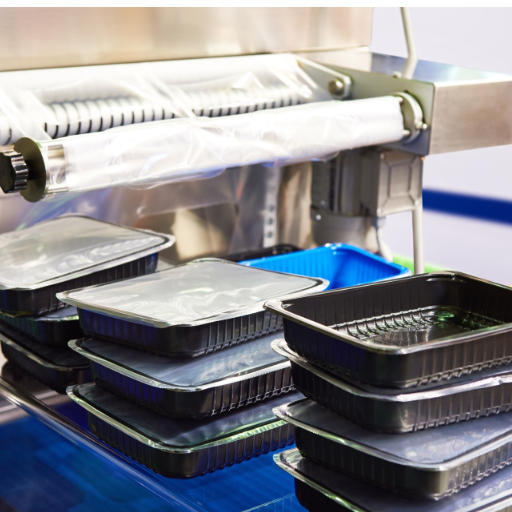
- Food Storage Containers
High-density polyethylene, thanks to its properties, is used in the manufacturing of air-tight food containment capsules. Preventing moisture and chemicals from entering, only edible products in them persist for a long period. According to several tests, these containers cause less harm to foodstuffs compared to unprotected ones, resulting in a reduction of up to 30% in food loss.
- Packaging for Liquid Products
Graphics referencing items such as milk, juices, vinegar, and oils are usually associated with the use of HDPE bottles. These containers are also very suitable in various transport conditions since their positive resistance to pressure and growing strength characteristics allow for limits of deformation to be preserved without fracturing.
- Freezer-Safe Packaging
Refrigerated bags and ice chests are the most effective applications of high-density polyethylene (HDPE) due to its low-temperature flexibility. Furthermore, it is possible to employ such goods for transportation and storage of frozen meat, vegetables, and fruits without any risk of tearing apart.
- Reusable Grocery Bags
Some of the more visible areas in which the use of HDPE bags, according to multi-well contributors, brings forth concrete benefits include: Custom advertising bags, which offer an enduring and effective marketing opportunity.
- Sealable Lids and Caps
Previous research has shown that the bursting of radial tears in glass slide micro-tensile samples occurs within the adhesive bonding film and not within the middle incohesive bonding layers adjacent to the adhesive bond of interest.
- Bulk Food Storage Drums
When it comes to industrial fabric dyeing, companies that opt for our HDPE-coated fabrics ought to be prepared rather extensively. It is important to take care of all these crucial safety measures.
Everyday Uses for HDPE Food Safe Products
HDPE (High-Density Polyethylene) has become indispensable in many facets of daily life, due to this plastic’s strong performance, chemical inertness, and the flexibility of its food uses. There is one area where the polymer enjoys the greatest application -reusable plastic ware such as food containers that can be recycled and reused. The plastic used in these containers is very useful in that one, due to the fact that they can be used to pack leftover food, cook in advance for reasons such as going to work, etc, and even deliver food without any mess. Furthermore, HDPE is commonly used for the production of milk containers, and due to its ability to keep liquids safe, it is used to make beverage containers as well.
Along with more advantages of high-density polyethylene foam exposure, kitchen cutting boards are among the key items that are utilized by both households and restaurateurs. They do not have pores and thus do not hold any form of liquid, including water. It again keeps food very safe from contamination which makes hygiene standards in terms of handling food very high. Bento and lunch boxes that are made of the HDPE material provide the user with both safety and the added feature of taking up as little space as possible and being reused. Also, regarding manufactured materials, the role of hdp in promotion of global food health and nutrition is quite significant especially since it is installed in sensitive places before the consumables can be utilized, again this is through consumption of this plastic in the form of caps and lids for food and beverages.
Home vs. Commercial Applications
The extreme capabilities of this high-density polyethylene have made it an unwavering approach as a material in homes and commercial spaces, yet the slightest specific conditions of whichever facility disrupt and add to the ways in which it is used. The products made from HDPE for domestic use include storage containers, food preparation items such as cutting boards, and also piping in a household. For example, costly HDPE materials are in use in plumbing works in homes so that these pipes prevent corrosion and leakages if they are on regular water pressure.
Best Practices for Using HDPE Food Safe Products
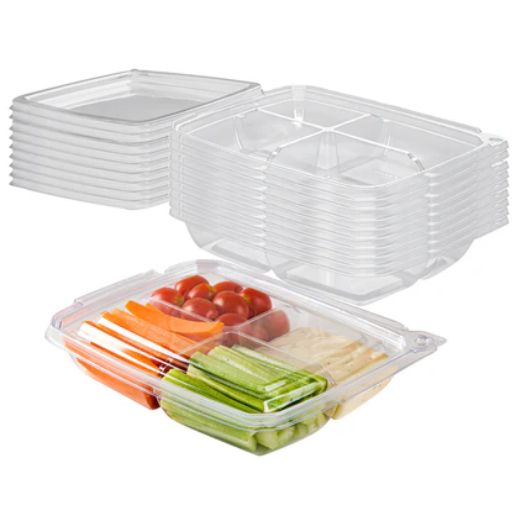
- Ensure Proper Cleaning and Sanitation
Assure the necessary cleaning and sanitation of the products made of HDPE to be applied in the food sector using appropriate food safe detergents apart from the specified procedures in the food code which otherwise may result in contamination.
- Use in Recommended Temperature Ranges
To that end it should be ensured that the respective temperature limitations specifics should be adhered to if certain ambient conditions could render such HDPE items unsafe for their intended uses, particularly within conditions of high heat or cold.
- Verify Food Safety Certifications
Make sure that the HDPE stuff is appropriate for contact with new or backup foods and meets all relevant FDA or other comparable requirements as regards use in such and similar circumstances for food contact including use as a food component.
- Avoid Prolonged Exposure to UV Light
Ensure the protection of the material from degradation by the sun or wherever there is a high level risk of such exposure by limiting UV penetration or selecting a necessary stabilized resin.
- Inspect for Wear and Damage
Periodically test the HDPE products for any visible damages such as cracks, twisting, or any others that might risk food safety, and replace as necessary to meet requirements and keep quality.
Minimizing Environmental Impact
High-density polyethylene (HDPE) is a 100 percent recyclable material and will reduce waste materials thrown into the environment in a significant way, provided disposal is done professionally. There exist comprehensive HDPE recovery programs in the world, recyclers are able to manufacture the pipes, bottles, plastic containers and even plastic timber from the intact waste in an efficient manner as it does not separate easily into its components. It is said that recycling HDPE can save up to 1.5 tons of carbon dioxide emitted into the atmosphere for the production of every ton of the polymer, which shows the importance of using HDPE in containing and reducing emissions of carbon dioxide. Equally, promoting the reuse of all possible HDPE materials can be very beneficial in that it extends the life of the remnants of the polyethylene and eliminates the need for manufacturing any new items, more especially those made from virgin material, leading to conserving more resources. Efforts to go green even further are currently underway, such as those towards making novel biodegradable and chemical recycling technologies that could serve to revolutionize HDPE waste management in the future.
Maximizing the Lifespan of Food Containers
Reference Sources
-
Which Plastics Are Safe For Food Storage
- Summary: This article discusses the safety of various plastics for food storage, emphasizing that HDPE (#2 plastic) is FDA-approved and highly resistant to chemicals, mold, and corrosion. It highlights HDPE’s use in milk jugs, juice bottles, and food storage containers.
-
- Summary: This resource confirms that HDPE is widely regarded as food-safe, particularly virgin HDPE, which is FDA-approved for direct food contact. It explains HDPE’s durability, resistance to leaching, and suitability for food packaging.
-
What is Food Grade Polyethylene & Is it Really Safe?
- Summary: This article explores the safety and environmental impact of food-grade polyethylene, including HDPE. It highlights HDPE’s non-toxic nature, recyclability, and resistance to chemicals. The article also provides safety tips, such as avoiding damaged containers and using HDPE products as intended to prevent chemical leaching.
Frequently Asked Questions (FAQs)
Q: What are the benefits of using HDPE food-safe containers?
A: HDPE food-safe containers are highly regarded in the food packaging industry due to their durability and resistance to impact. They are considered safe for food storage as they do not leach harmful chemicals into food, making them ideal for storing food. These containers are also recyclable, with a recycling number of 2, which makes them environmentally friendly. Additionally, HDPE is FDA-approved for food contact, ensuring that they meet the safety standards required for food applications. Their ability to withstand temperature fluctuations adds to their versatility, making them suitable for both refrigeration and long-term food storage.
Q: Are all plastics considered safe for food contact?
A: Not all plastics are created equal when it comes to food safety. Different types of food-grade plastics are designed specifically for safe food contact, while others may not meet safety standards. For instance, HDPE and LDPE are generally considered safe for food storage due to their non-toxic nature. In contrast, some plastics can leach chemicals into food, especially when heated. It’s crucial to look for food-grade markings on plastic products to ensure they are approved for food use. Always refer to the safe plastics number chart to identify which types of plastics are suitable for food applications.
Q: What is the difference between HDPE and LDPE in food storage?
A: HDPE (high-density polyethylene) and LDPE (low-density polyethylene) are both commonly used in food storage but have different properties. HDPE is more rigid and has a higher melting point, making it suitable for long-term food storage and safe for food contact. On the other hand, LDPE is more flexible and is often used in plastic food bags and wraps. While both types are considered safe for food, HDPE is typically favored in the food packaging industry for containers and bottles due to its strength and recyclability. When selecting between the two, consider the intended use and the specific food storage requirements.
Q: How can I identify food-grade plastics?
A: Identifying food-grade plastics is essential for ensuring food safety. Look for markings on the bottom of plastic containers that indicate the plastic type and recycling number. Plastics labeled with recycling numbers 1 (PET), 2 (HDPE), and 5 (PP) are generally considered safe for food use. Additionally, check for certifications such as FDA-approved for food contact, which guarantees that the plastic meets safety standards for food applications. Understanding the differences between food-grade and non-food-grade plastics helps in making informed choices for storing food safely.
Q: Can HDPE be used for direct contact with food?
A: Yes, HDPE is a popular choice for direct contact with food due to its non-toxic nature and excellent safety profile. It is widely used in the food packaging industry for products like containers, bottles, and buckets. HDPE is FDA-approved for food contact, meaning it can safely store a variety of food items without contaminating them. This plastic type is also resistant to acids and bases, making it ideal for storing both dry and wet food items. When using HDPE containers, always ensure they are designated as food-safe to avoid any potential risks.






